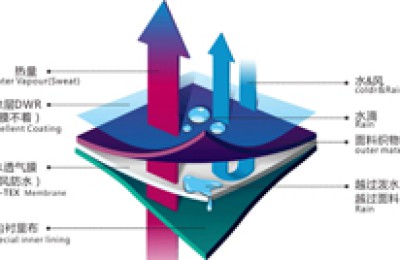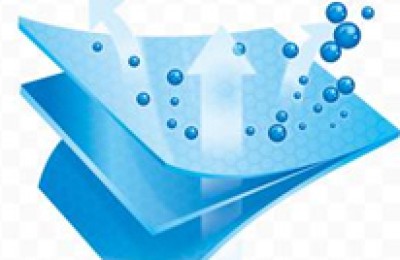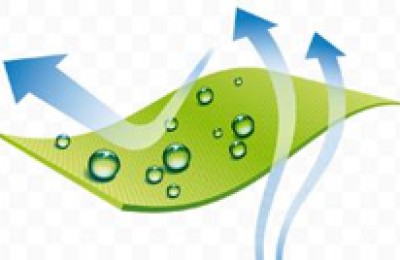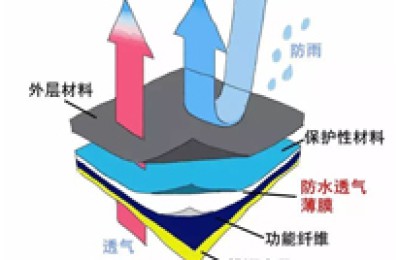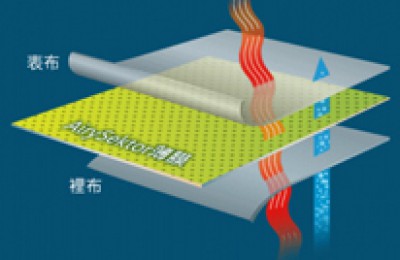42. How is chitosan produced? What are its main uses in textile printing and dyeing? Can chitosan be used as antistatic finishing on polyester fabrics?
Chitosan is a polymer material with excellent properties extracted from the chitin of shrimps, crab shells and other insects. Its preparation method is: shrimps and crab shells → wash with water → dry and pulverize → use 6% hydrochloric acid at room temperature Soak for tens of hours under water, remove calcium carbonate → wash with water → dry → soak with 10% caustic soda and boil at 100°C to decompose protein → soak with 1% potassium permanganate for dehydration → wash with water → treat with oxalic acid at 60~70°C → Obtain white chitin → React and deacetylate in 40% to 50% caustic soda at 120°C → Add dilute hydrochloric acid to dissolve → Add excess acetone to precipitate acetate from chitosan → Filter → Wash with water until neutral → Dry → White Or translucent chitosan. The deacetylation degree of the above products is above 70%.
There are two OH and one -NH in the chitosan polymer chain. , so a variety of chemical reactions can occur, including grafting, cross-linking, acylation, sulfonation, carboxymethylation, alkylation, nitration, halogenation, oxidation, reduction, complexation and other reactions. It has many uses in the field of fabric printing and dyeing.
① After dissolving the chitosan solution in a solvent, a thick, high-viscosity adhesive can be obtained, which can be used for nonwoven fabrics.
② Use 20% chitosan/collagen aqueous solution to pad and dry the cotton fabric at 130. After baking for 5 minutes at C, the obtained product has anti-allergic and antibacterial effects.
③ Add the acetic acid aqueous solution of chitosan to the copolymer emulsion of acrylate-butyl acrylate-ethyl acrylate-2-hydroxyethyl methacrylate at 80°C. After cooling, the resulting solid The material is washed with water and then dissolved with toluene to obtain an acrylic copolymer solution containing 15% chitosan. The nylon fabric and polyurethane fiber are subjected to antibacterial PU coating post-finishing.
④ Printing and dyeing wastewater contains a variety of heavy metal ions. Since each C2 in the chitosan molecular structure is connected to a primary amino group, the lone pair of electrons on its nitrogen atom can be put into the empty orbit of the heavy metal ion to form a coordination bond. Therefore, chitosan can be used as a chelating agent. Many harmful heavy metal ions are removed through chelation.
⑤ Chitosan can be combined with hexahydrobenzene organophosphine to make a new fire retardant agent.
⑥ Dissolve chitosan and ethylene acetic acid, which can be used as a printing thickener.
⑦ After treating the fabric with chitosan, use direct dyes and acid dyes to color cotton and wool, which has a certain deepening effect.
⑧ Chitosan can be used for anti-felting treatment of wool. Generally, an oxidant is used to soften the wool and destroy the angles of the scales before treatment, and then fill the angles of the scales with chitosan to remove the directional friction of the wool and achieve Anti-felting effect.
⑨The molecular structures of chitosan and cellulose fiber are very similar, and they have certain binding force. Acetic anhydride is used to transform chitosan into a fabric finishing agent, which can be used for the no-iron finishing of cotton.
It can be seen that chitosan has broad uses in fabric printing and dyeing. The development of chitosan is of great significance to the development of fabric printing and dyeing products, the implementation of green production, and the protection of the environment.
Polyester has a tight structure and does not contain reactive groups in its molecules. It needs to be processed to bind chitosan molecules to the fiber. After alkali reduction, polyester loses weight and becomes thinner to obtain a simulated silk effect. Polyester Under strong alkali conditions, partial ester bonds are hydrolyzed to form many cavities on the surface of the fiber, and a certain amount of carboxyl groups are produced on the fiber molecules. The existence of these cavities and carboxyl groups facilitates the insertion of chitosan molecules through hydrogen bonds and van der Waals forces. Chemical reactions occur on the fibers and with fiber molecules to create conditions for covalent bonds. Polyester fabrics can obtain permanent antistatic effects through chitosan post-finishing. There are reports that using sodium acetate as a catalyst can catalyze the covalent bonding of chitosan and polyester that has been treated with alkali reduction; using dicarboxylic acid compounds such as tartaric acid as a cross-linking agent can catalyze the covalent bonding of chitosan molecules in the chitosan film. cross-linking reaction occurs.
Antistatic finishing of polyester fabric:
First, treat the polyester fabric with 10% NaOH solution at 90°C for 60 minutes at a bath ratio of 1:30, and perform alkali weight reduction treatment. The best effect is to ensure that the weight loss rate after alkali reduction is between 10% and 20%. Dissolve chitosan with 1% HAc solution to make 0.5% chitosan solution, add cross-linking agent tartaric acid 2g/L, catalyst sodium acetate 2g/L, and use polyester fabric treated with alkali reduction to Soak in the working fluid for 2 minutes, dry with hot air at 85℃, immerse and dry for 2 times, immerse and dry for 3 times, bake at 130℃ for 60min, then use 0.5% cleaning agent, soak at 30℃ for 10min, rinse with cold water 3 times. The antistatic effect is shown in Table 5-12.
| Specific resistance of fabric/Ω | ||||
Processing method | Number of washes after baking |
| |||
0 | 1 | 2 | 3 | Moisture regain rate/%
| |
No cross-linking agent or catalyst | 6.65×103 | 8.12×106 | 5.33×108 | 9.66×109 | 2.1 |
Add cross-linking agent and catalyst | 1.43×103 | ||||
No cross-linking agent or catalyst | 6.65×103 | 8.12×106 | 5.33×108 | 9.66×109 | 2.1 |
Add cross-linking agent and catalyst | 1.43×103 | 4.65×104 | 5.12×104 | 8.24×104 | 6.56 |
Commercially available antistatic agents | 6.8×104 | 2.59×109 | 5.74×1010 | 6.52×1011 | 1.9 |
AAAVBJYTUJGHNH
Disclaimer:
Disclaimer: Some of the texts, pictures, audios, and videos of some articles published on this site are from the Internet and do not represent the views of this site. The copyrights belong to the original authors. If you find that the information reproduced on this website infringes upon your rights, please contact us and we will change or delete it as soon as possible.
AAAstyle=”LINE-HEIGHT: 11.75pt; MARGIN: 0cm 0.45pt 0pt; mso-line-height-rule: exactly” class=MsoNormal> 4.65×104
5.12×104
8.24×104
6.56
Commercially available antistatic agents
6.8×104
2.59×109
5.74×1010
6.52×1011
1.9
AAAVBJYTUJGHNH
Disclaimer:
Disclaimer: Some of the texts, pictures, audios, and videos of some articles published on this site are from the Internet and do not represent the views of this site. The copyrights belong to the original authors. If you find that the information reproduced on this website infringes upon your rights, please contact us and we will change or delete it as soon as possible.
AAAmso-border-left-alt: solid windowtext 1.0pt; mso-border-top-alt: solid windowtext 1.0pt” vAlign=top width=101>
1.9
AAAVBJYTUJGHNH
Disclaimer:
Disclaimer: Some of the texts, pictures, audios, and videos of some articles published on this site are from the Internet and do not represent the views of this site. The copyrights belong to the original authors. If you find that the information reproduced on this website infringes upon your rights, please contact us and we will change or delete it as soon as possible.
AA



